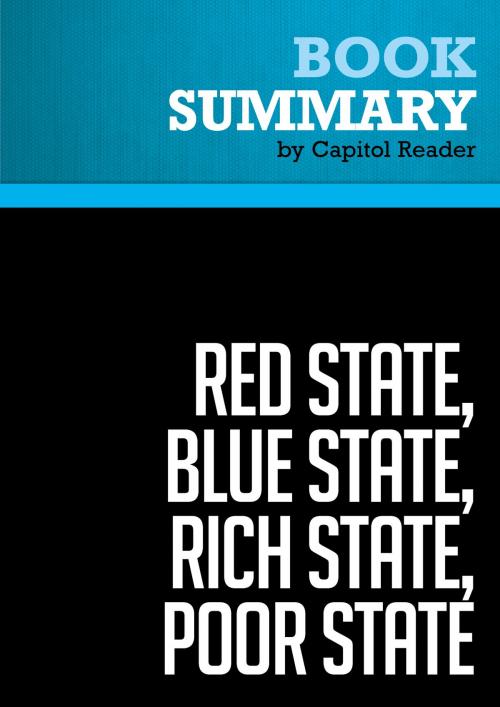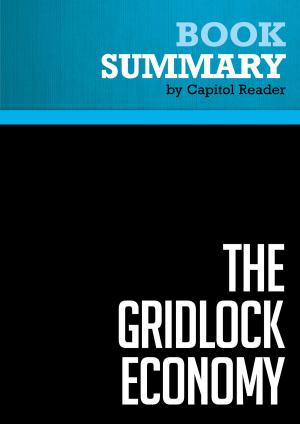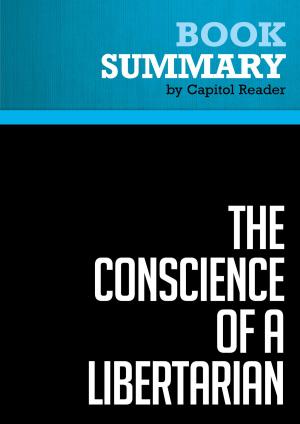Summary: Red State, Blue State, Rich State, Poor State - Andrew Gelman
Why Americans Vote the Way They Do
Nonfiction, Social & Cultural Studies, Political Science, Government, Business & Finance| Author: | Capitol Reader | ISBN: | 9782511001547 |
| Publisher: | Must Read Summaries | Publication: | June 21, 2013 |
| Imprint: | Political Book Summaries | Language: | English |
| Author: | Capitol Reader |
| ISBN: | 9782511001547 |
| Publisher: | Must Read Summaries |
| Publication: | June 21, 2013 |
| Imprint: | Political Book Summaries |
| Language: | English |
Complete summary of Andrew Gelman's book: "Red State, Blue State, Rich State, Poor State: Why Americans Vote the Way They Do".
This summary of the ideas from Andrew Gelman's book "Red State, Blue State, Rich State, Poor State" shows that in the 2000 and 2004 elections, George W. Bush captured the lower-income states in the South and middle of the country, while the Democrats took the richer states in the Northeast and West Coast. In his book, the author explains how the different parts of the country and the different income-level voters are split in their political voting. This summary examines this paradox and some of its potential variables, as well as explaining what this means for the future of American politics.
Added-value of this summary:
• Save time
• Understand key concepts
• Expand your knowledge
To learn more, read "Red State, Blue State, Rich State, Poor State" and discover the truth behind voting in America.
This summary of the ideas from Andrew Gelman's book "Red State, Blue State, Rich State, Poor State" shows that in the 2000 and 2004 elections, George W. Bush captured the lower-income states in the South and middle of the country, while the Democrats took the richer states in the Northeast and West Coast. In his book, the author explains how the different parts of the country and the different income-level voters are split in their political voting. This summary examines this paradox and some of its potential variables, as well as explaining what this means for the future of American politics.
Added-value of this summary:
• Save time
• Understand key concepts
• Expand your knowledge
To learn more, read "Red State, Blue State, Rich State, Poor State" and discover the truth behind voting in America.
Complete summary of Andrew Gelman's book: "Red State, Blue State, Rich State, Poor State: Why Americans Vote the Way They Do".
This summary of the ideas from Andrew Gelman's book "Red State, Blue State, Rich State, Poor State" shows that in the 2000 and 2004 elections, George W. Bush captured the lower-income states in the South and middle of the country, while the Democrats took the richer states in the Northeast and West Coast. In his book, the author explains how the different parts of the country and the different income-level voters are split in their political voting. This summary examines this paradox and some of its potential variables, as well as explaining what this means for the future of American politics.
Added-value of this summary:
• Save time
• Understand key concepts
• Expand your knowledge
To learn more, read "Red State, Blue State, Rich State, Poor State" and discover the truth behind voting in America.
This summary of the ideas from Andrew Gelman's book "Red State, Blue State, Rich State, Poor State" shows that in the 2000 and 2004 elections, George W. Bush captured the lower-income states in the South and middle of the country, while the Democrats took the richer states in the Northeast and West Coast. In his book, the author explains how the different parts of the country and the different income-level voters are split in their political voting. This summary examines this paradox and some of its potential variables, as well as explaining what this means for the future of American politics.
Added-value of this summary:
• Save time
• Understand key concepts
• Expand your knowledge
To learn more, read "Red State, Blue State, Rich State, Poor State" and discover the truth behind voting in America.















